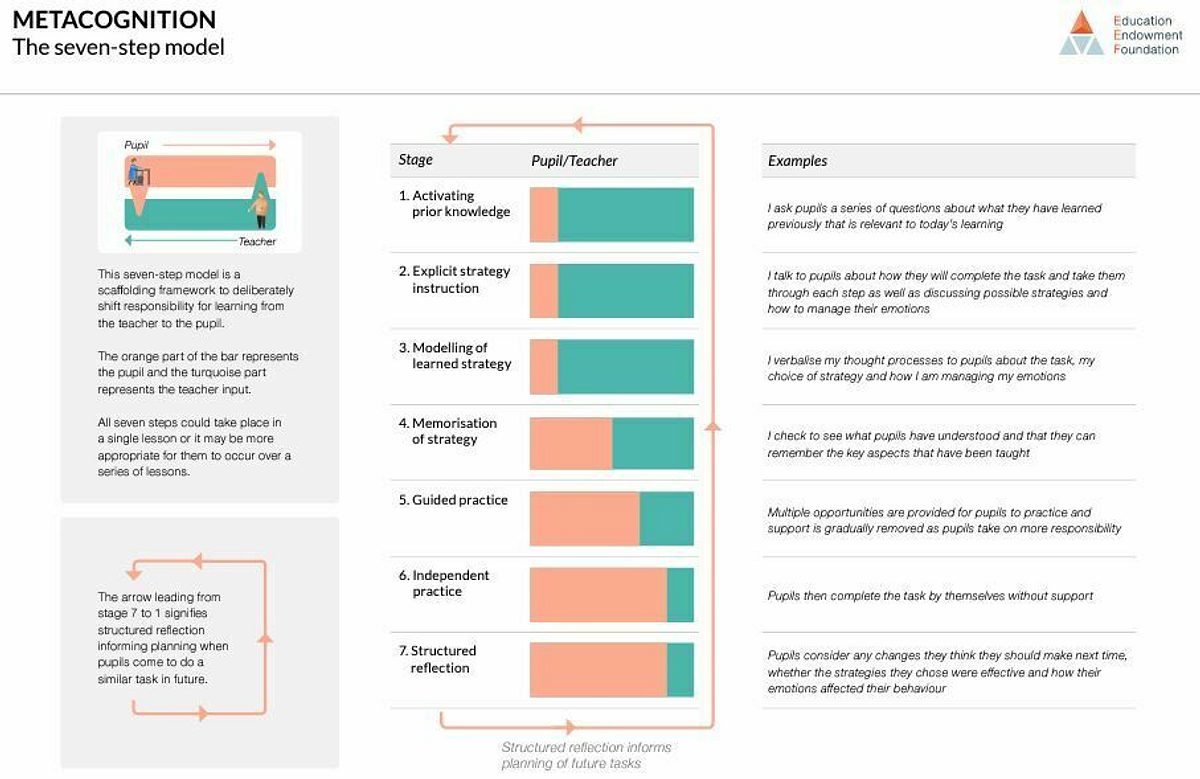Fresh off the coach from a recent Year 8 school visit to a Birmingham Museum, I was reflecting on our school’s approach to resetting routines. Most of these pupils had not been on a school visit since 2019 – when they were in Year 5. In light of this, we decided to explicitly ‘teach the trip’: the behaviours and routines expected at every single step of an offsite visit, and there were a lot to consider!
Recommendation 4 of the EEF’s Improving Behaviour in Schools guidance report states that some promising strategies do not require complex pedagogical changes. For instance, greeting our pupils at the door, or having a ‘do now’ retrieval activity, are common approaches. And yet, dig deeper and the seemingly simple reveals a potentially subtle list of actions. For pupils to grasp routines, we need to reveal these hidden steps, so they become overt and visible.
For example, a ‘do now’ retrieval activity may require sitting down according to a seating plan, finding equipment (pen or pencil), setting out the work in a book or on a whiteboard, writing a title and date (underlining), accessing appropriate supports (dictionary, textbooks, displays), working with a partner or in silence.
What is clear is that seemingly effortless routines are hard won, and not as simple as they might appear.
Teaching routines and the 7‑step model
Routines vary from school to school, but nudging them into becoming automatic habits for staff and pupils takes more than just explicit instruction from one teacher.
The 7‑step model from the EEF’s Metacognition and Self-Regulation guidance report is a framework which supports pupils to move from dependence to independence. We can consider this helpful sequence when teaching learning behaviours.

Here are some questions for reflection when thinking about behavioural routines for ‘do now’ routines.
Activate prior knowledge
- How have we used staff meetings to re-state routines around the start of lessons to make sure that we have a consistent approach?
- How do we use questioning to re-enforce pupils’ knowledge of how we start a lesson?
Explicit strategy instruction
- Do we all talk through each step of the process, revealing every hidden step or action?
- Do we repeat the procedure with every class, every day?
Modelling of learning strategy
- Do we verbalise our thought processes and narrate positives we observe to help model the process?
Memorisation of strategy
- Do we check our pupils have remembered every step, so it becomes habitual?
Guided practice
- For those pupils with SEND, with SEMH struggles, or with disrupted attendance, how do we scaffold these routines?
- How do we communicate with other adults in the classroom to ensure consistent messages?
- How do we gradually fade our support over time?
Independent practice
- Can pupils enter the classroom successfully, demonstrating these behaviours when we don’t specify the steps?
- Do we praise excellent examples?
Structured reflection
- How do we review our routines – visibly and explicitly, verbalising our thinking?
- Do we ask pupils to summarise and explain our ‘do now’ retrieval routines?
Cultivating a calm culture of learning in our classrooms, with a smooth start, means we can reduce overloading pupils’ working memory, gain learning time and demonstrate our high expectations. Maximising this learning time by teaching learning behaviours is more crucial now than it has ever been.
With continued staff and pupil absence, like most schools, we are grappling with increased demand for supply teachers. We aim to relentlessly re-teach routines to maximise learning time in the classroom. Involving supply staff in this process, as we welcomed them into our school culture, has proven particularly important.
Whether we are taking pupils to magnificent museums or beginning lessons in our familiar classroom settings, being explicit about a routine reset is likely to benefit our pupils and prove a boon for behaviour.
Download
Metacognition: The seven-step model

Blog
EEF blog: Modelling Independence – The ‘Seven-step Model’ planning tool


Guidance Reports
